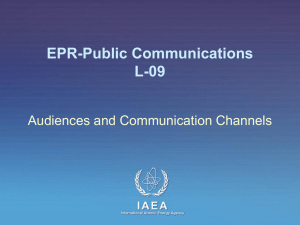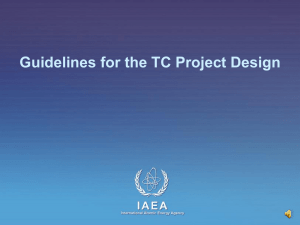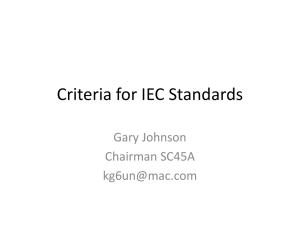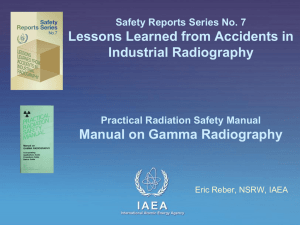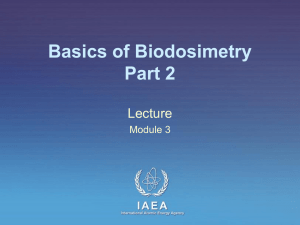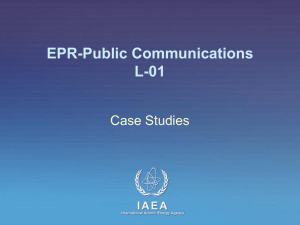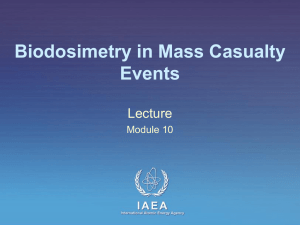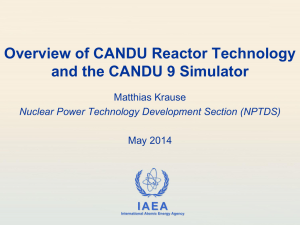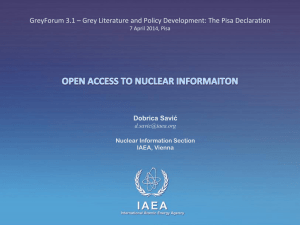L-05 Creating a Public Communications Program
advertisement
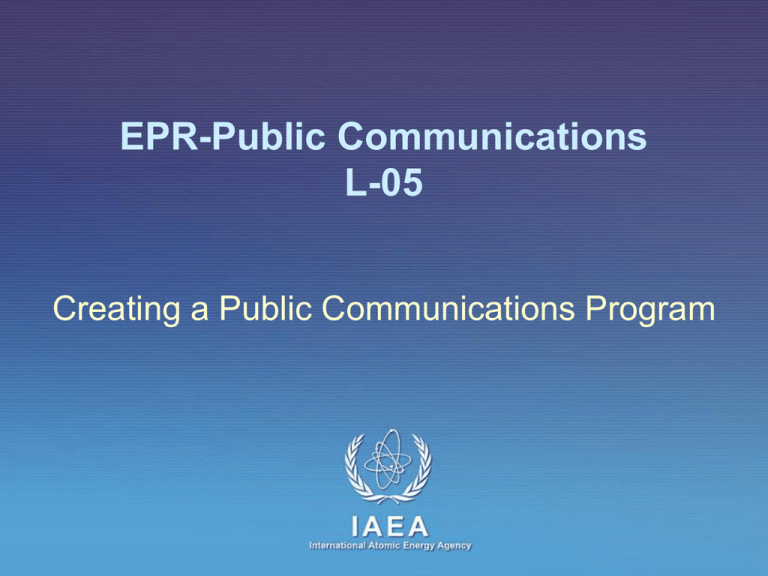
EPR-Public Communications L-05 Creating a Public Communications Program IAEA International Atomic Energy Agency Prepare, plan, practice • Make goals clear and precise; • The PIO group should have a mission statement that is understood and frequently referred to; • Example: • “To manage, through actions, policies, and messages, the human behavioral aspects of emergency preparedness, response and recovery.” IAEA Program setup • Designate jobs, roles, and responsibilities based on the Incident Command Structure (ICS) Incident Commander Public Information Officer/Group Logistics Section Safety Officer IAEA Planning Section Operations Section Finance/Adm inistration Section Program setup • Establish internal organizational process for getting messages approved during an emergency; • Provide for needed resources (space, equipment, communications lines, personnel); • Establish agreements with other organizations on coordination of information release. IAEA Program setup • List of contacts (addresses, office and mobile phones, including after-hours numbers, emails, etc.) for: • Media (including blogs and online sites); • Stakeholders (NGOs, industry, etc.); • Contacts at other organizations that will be part of the emergency response (including international); • Other key public and political officials; • Members of your own team. IAEA Public communications activities • The PIO is responsible for delivering public information activities; • Some states and organizations may already have groups responsible for public information; • Such groups could be used to fulfill the PIO function during a radiation emergency. IAEA Public communications activities • Strategic planning–to develop a strategy for communicating during the emergency; • Media Relations—to manage relations with the media; • Media Monitoring—to monitor effectiveness of media relations and accuracy of reporting; • New Media—to maintain emergency specific website. IAEA Public Communications Activities • Liaison and Coordination—to coordinate information/messages and release of information; • Public Relations—to provide information to the public; • Internal Communications—to keep responders and employees informed about what is being said to the media. IAEA Program setup • Identify potential ways to contact various audiences. Become familiar with how to use these channels so in the event of emergency you are prepared to use them immediately; • Where possible, establish these channels (an emergency site on your organization’s home page, links to social media, emergency alert systems to reach the public’s radios or cell phones. IAEA Organization and planning • The PIO structure should also include liaison officers– PIO staff who are assigned to sit in on meetings and discussions in the Planning and Operations Sections; • The PIO will also need access to technical experts, so at least one expert will need to be assigned as an advisor to the PIO; • The designated spokesperson or spokespersons will also report and work within the PIO structure. IAEA Phases of Emergency Management • Preparedness • Response • Recovery Planning for public communications is necessary for all potential emergencies in all three phases. IAEA Basic steps • List all potential emergencies; • For each emergency, identify the goals of your risk communication plan; • For each emergency, develop a resource of basic information about such an emergency. IAEA Risk communication planning Time_________ Date_________ Circumstances Context Risk Perception Characteristics Audiences Channels Spokesperson Actions/Messages Facts, history, summarize issues. Based on facts in column 1, list risk perception factors are involved in the emergency? Who are your audiences? Which relationships are most important? Identify special populations. List the various ways to reach each audience: news conferences, press releases, websites, social media, “kitchen-table” meetings, public meetings, phone calls… Determine who will be talking. Spokesperson should have authority and expertise. Based on all columns, enter here what you will say. Facts and context about issue in general . Have similar incidents occurred in the past? When? What were the consequences? Note details of current relationship with stakeholders (good, bad, controversial, cooperative…) Note political realities in local communities. List all relevant factors in order of priority. Example: if “trust” is a perception factor, determine how you will directly address it. Copyright, Ropeik & Associates IAEA Column 1: Circumstances, context • List basic facts about the emergency; • Enter facts about the issue in general, including its context and history. IAEA Column 2: Risk Perception Characteristics • Based on the facts in Column 1, list the psychological factors, like trust, control, or uncertainty that might be involved in the emergency; • List all the emotional factors that might be involved, but prioritize them based on their importance; • Trust is always key. IAEA Column 3: Audiences • Who do you want to reach? • Identify special at-risk populations; • Some of the risk perception factors in Column 2 will apply to certain audiences more than others. IAEA Column 4: Channels • List the various ways to reach each audience: • News conferences, press releases, radio announcements… • Postings to web sites or social media sites; • One-on-one “kitchen table” meetings in people’s homes (take on different forms in preparation and recovery stages); • Public meetings (preparation, recovery stages). IAEA Column 5: Spokesperson • Designate the spokesperson(s) who will be most trusted by the audiences affected; • Information should always be delivered in plain language, even if the spokesperson has technical expertise. IAEA Column 6: Actions, Messages • Based on details from the other columns, enter what you plan to do and what messages you will deliver; • Risk communication is how you act not just how you speak; • Refer to the other columns to effectively fill in this one. • IAEA Risk communication planning process chart • Use the chart for all three stages of risk • • • • communication; Use as many pages as necessary; Note the time and date on each page; Fill in new pages as circumstances change; These charts become a playbook for each plan, a record of the process to refer to as events unfold and later for determining lessons learned. IAEA Prepare information materials • Topic specific fact sheets; • Answers to common questions from the public; • Answers to questions from the news media; • Resources to quickly distribute to the media (including video and audio). IAEA Other basic steps to prepare • Create and strengthen relationships with key partners (news media, public health authorities…); • Develop actions and messages for each potential emergency based on the chart, keep organized and available for reference; • Research what the public wants to know and address public concerns; • Test your messages. IAEA Practice • Risk communication plans should be an integral part of any exercise; • Exercises should be designed to test the challenges of managing public behavior during a theoretical event; • Senior managers and spokespeople should practice delivering key messages; IAEA Summary • Set explicit goals and a clear sense of mission and • • • • purpose; Prepare in advance: create an infrastructure, job assignments and procedures; Prepare materials, equipment, contact information, messages, for potential emergencies; Message preparation is a process that requires careful thinking about other elements first; Practice risk communication in exercises. IAEA

